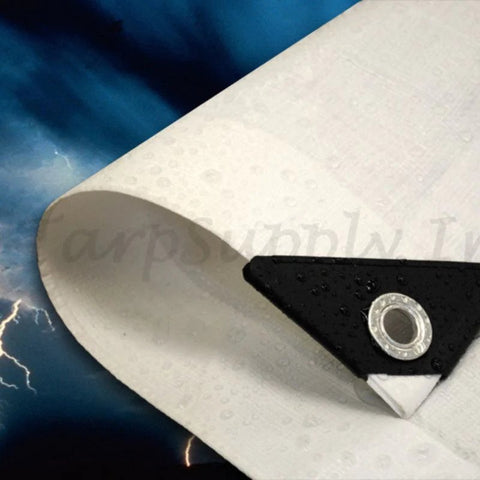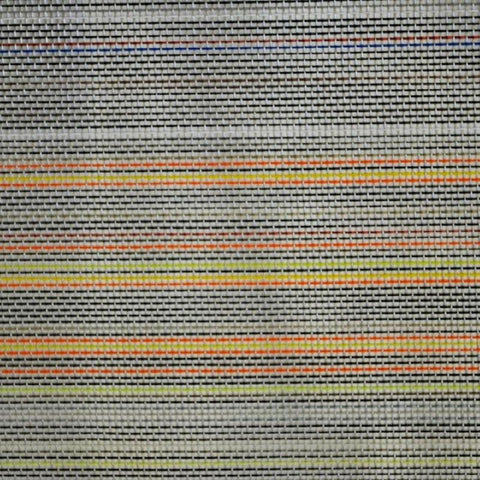Embracing the ethos of Tarp Supply Inc., we recognize the profundity of your investment in a tarp. Your aspiration to procure a shield that defies the trials of time, all while offering unflinching shelter to your possessions, tools, or open-air sanctums, is both resonant and respected. The temporal journey of a tarp's lifespan traverses a diverse landscape, a trajectory steered by an interplay of several factors - from the material employed to the caress of environmental elements, culminating in the embrace of assiduous maintenance.
In this all-encompassing guide, we embark on a voyage into the realms that wield influence upon the lifecycle of a tarp. Our objective? To present you with precious revelations, empowering you to orchestrate an astute determination for your tarp requisites.
Tarp Materials: Unraveling the Choices
The lifespan of a tarp commences with the materials employed in its construction. Diverse materials provide differing degrees of durability and resilience against the strains of wear and tear. Let's delve into a selection of typical tarp materials.
Polyethylene Tarps

Polyethylene tarps, affectionately labeled poly tarps, have secured a steadfast spot in popularity owing to their cost-effective nature and boundless adaptability. These tarps are meticulously woven from polyethylene fibers, donning a protective waterproof veneer. While their vulnerability to the erosive clasp of UV rays and susceptibility to rending after prolonged exposure to tempestuous climatic conditions remain acknowledged, their resilience remains undeniable. Their life span is generally between half a year to a few years.
Vinyl Tarps

Vinyl tarps emerge as the paragon of sturdiness, heftily poised and imbued with unparalleled resilience. Engineered to dance with tempests and mock extreme climatic extremities, their innate resistance extends to UV rays, the incursion of mold, the specter of mildew, and the abrasive caress of the elements. Vinyl tarps can effortlessly span beyond 5 years and in some cases more than 10 years, making them a great investment.
Canvas Tarps

Adorning the stage with an exquisite touch, canvas tarps showcase their distinctive trait of breathability, which seamlessly blends with their inherent ability to stand firm against the persistent advances of mildew and mold. Their versatility shines through an array of uses, from enwrapping machinery to cradling outdoor furniture and treasured belongings. The lifespan of canvas tarps typically range from 3-5 years depending on the weather elements.
Mesh Tarps

Crafted with specific intentions in mind, mesh tarps cater to particular needs like offering shade or facilitating the passage of air. Although they may not boast the same durability as other tarp materials, their lifespan typically spans from two to four years. Nevertheless, their tailored design renders them ideally suited for distinct scenarios.
Environmental Factors: Battling Nature's Elements
The environment in which the tarp is used plays a significant role in determining its lifespan. Different weather conditions, exposure to sunlight, and temperature fluctuations can all impact the tarp's longevity.
Sun Exposure

UV rays from the sun can cause materials like polyethylene to degrade over time, leading to brittleness and eventual tearing. Vinyl and canvas tarps, on the other hand, fare better against UV rays, which contributes to their longer lifespan.
Rain and Moisture
Excessive moisture can lead to the growth of mold and mildew, particularly on canvas tarps. However, using a mildew-resistant treatment can extend the tarp's life in wet environments.
Wind and Storms
High winds can strain the tarp and cause wear along the edges or stress points. Reinforced hems and grommets can help counteract this effect.
Extreme Temperatures
Extreme cold or heat can cause materials to contract or expand, potentially leading to cracks or weakening. Vinyl tarps perform well in extreme temperatures, making them suitable for various climates.
Proper Maintenance: Preserving the Longevity

To maximize the lifespan of your tarp, regular maintenance is crucial. Here are some essential tips to keep your tarp in top shape:
Cleaning
Regularly clean your tarp with mild soap and water to remove dirt, debris, and potential contaminants. Avoid using harsh chemicals that could damage the tarp's protective coating.
Storage
When not in use, store your tarp in a clean, dry area away from direct sunlight. Rolling the tarp instead of folding it can help prevent creases and extend its life.
Repairs
Promptly address any tears, holes, or damaged areas. Small issues, if left unattended, can worsen over time and shorten the tarp's lifespan.
Conclusion
In conclusion, the lifespan of a tarp varies depending on the material used, environmental conditions, and maintenance efforts. If durability is your primary concern, vinyl tarps offer exceptional longevity, making them ideal for long-term use. However, each type of tarp has its own unique advantages and best use cases.
At Tarp Supply Inc., we offer a wide selection of high-quality tarps crafted from various materials, ensuring that you find the perfect solution for your specific needs. Whether it's protecting your equipment, covering outdoor spaces, or safeguarding your belongings, we have the right tarp for you.
Remember, by understanding the factors that impact the lifespan of a tarp and taking proper care of it, you can ensure that your investment provides reliable protection for years to come.





